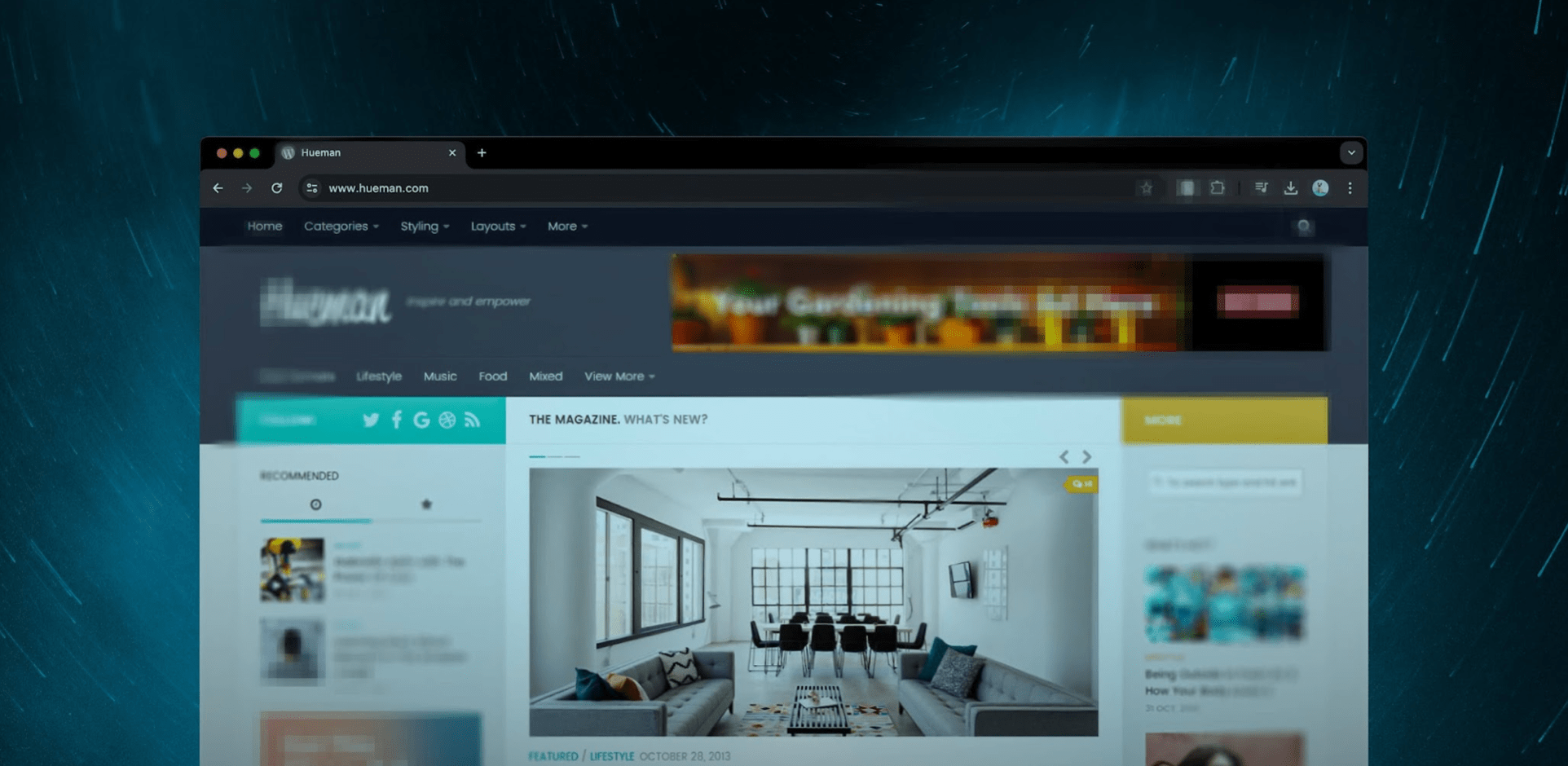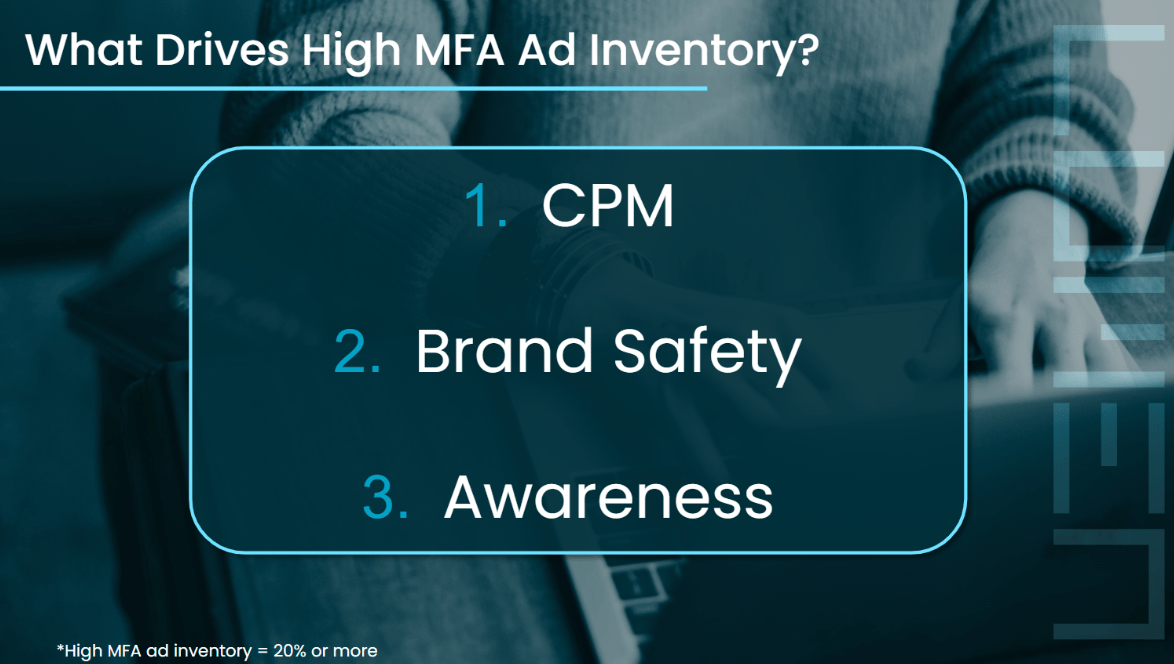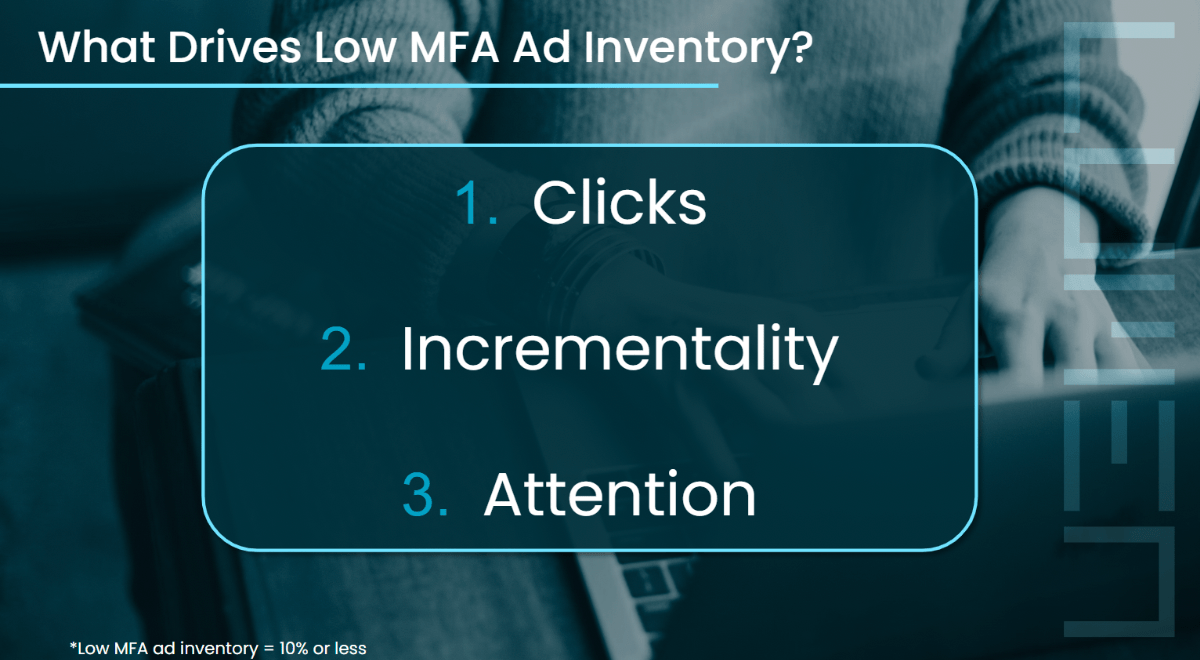3 Key Findings from the
Made-for-Advertising Landscape in 2024


In Lumen’s recent report with Exchangewire, “The MFA Report 2024: From Made for Advertising to Made for Attention,” Lumen and Exchangewire surveyed media buyers across the UK and the US to understand how advertisers are thinking about made-for-advertising (MFA) websites and ad strategies in 2024.
MFA websites, which are clickbait websites with a poor user experience and unoriginal content, have been making headlines recently. In the US, the Association of National Advertisers estimated that $100 billion a year is wasted on low-quality websites, amounting to almost a quarter (23%) of total programmatic ad spend. Basically, a lot of money is going to waste on websites that are made to capture traffic, but not real engagement.
The report wanted to look at how advertisers plan around MFA websites and what tactics they use to ensure media efficiency and effectiveness.
Here’s what our report found:

Lumen and Exchangewire found that, on average, advertisers estimate that about 15% of their ad inventory is delivered to made-for-advertising websites. But on the high end, some media buyers are still delivering ads to inventory where made-for-advertising websites make up more than half (55%) of the ad inventory.
When ad budget gets spent on MFA websites, most of the media spend goes to waste on impressions that aren’t seen.
“MFA websites appear at a surface level to provide great value — impressions are typically ‘viewable’ and low cost – what’s not to like?” says Katie Hartley, managing director at dentsu. “In reality, all brands are really looking to achieve something beyond simply being delivered. Just because an ad is viewable, it doesn’t mean that it will be viewed. Our research with Lumen showed us that on some sites most digital display ads go entirely unseen.”
A lot of this has to do with a broken system of advertising metrics that optimize for potential reach, instead of real attention.

Metrics make a big difference when it comes to exposure to MFA websites. According to the report, campaigns measured by CPM, brand safety, and awareness are more likely to be exposed to poor-quality websites.
Here’s why:
– CPM: Budget-based campaigns prioritize efficiency of spend over effectiveness of media, buying on cheap ad impressions instead of effective impressions.
– Brand Safety: Blocking potentially controversial or negative web content can unintentionally filter out high-attention publishers when the criteria becomes too stringent.
– Awareness: Media plans that focus on “viewability” goals deliver ads to websites with high traffic and lower costs without considering the layout, content, or dwell time on the website.

When it comes to eliminating MFA websites from your media mix, it’s all about rethinking the metrics for the campaign. The report found that optimizing for performance metrics like clicks, incrementality, and attention drive lower MFA ad inventory:
– Clicks: Prioritizing conversions and cost-per-action can focus bidding on actual engagement from audiences, ensuring ads are delivered to websites with higher interaction and longer dwell times.
– Incrementality: Ensuring ads are delivered to net new audiences that haven’t already purchased a product or been exposed to the brand incentivizes programmatic bidding based on specific audience segments and actions, not traffic or reach
– Attention: Bidding based on attentive seconds per 1000 impressions (APM) instead of cost per 1000 impressions (CPM) prioritizes impressions that are the most likely to be seen
In the report, agencies explain that attention metrics can help change media planning for the better.
“At a baseline level, we use % viewed to measure the proportion of impressions that receive any eye gaze at all,” says Jon Waite, global managing director at Havas Media Network. “This allows us to identify inattentive impressions and reduce wastage. Beyond this, levels of attentive seconds (APM) tell us a lot about the quality of a placement in terms of its size, screen real estate, format, and ad clutter — acting as a proxy for the quality of the media experience the user is likely to have.”
Lumen’s attention performance model, the Lumen Loop, analyzes a brand’s programmatic data and curates a custom attentive PMP (aPMP) based on the domains that will drive the optimal performance for the campaign. By running a campaign based on attention, instead of reach, brands can reduce the made-for-advertising website exposure and get better results with made-for-attention ad strategies, instead.
Want to learn more?